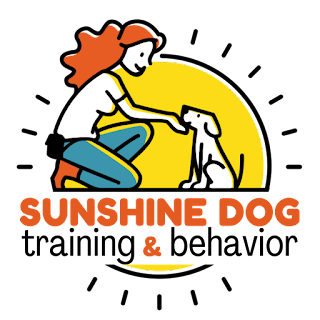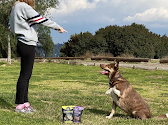This is really a pretty arbitrary statement. As a professional who has turned more toward helping families with dogs after becoming a mother myself (3 kids –– girls ages 10, and twins that are 6) I now see things with dogs and kids in a different light. After becoming a mother I'm more vigilant and aware of dog body language and stress signals. I'm also more aware of what kids should and should not do around, to, or with dogs.
What I see is that most often "good with kids" means the dog hasn't actually done anything negative to a child, or that the dog is very tolerant with kids antics and behavior. This doesn't mean the dog should allow this behavior, just that for some reason it does. This is where the label comes, because the dog has a high tolerance level.
On the other hand, I've seen a dog labeled as "not good with kids" when the fact is that a child did something inappropriate to the dog, the dog reacted well within its rights and therefore now the dog is labeled as "not good with kids". This really comes down to a matter of education on the human side of things for both adult and child (um, and likely rescue group or shelter!)
A label of "good with kids" doesn't negate a parent's job of learning how to read dog body language, respect what that language is saying, their space and their tolerance levels. Also, the parents need to be in touch with someone who is able to appropriately able show their child(ren) what is appropriate dog-etiquette that includes the same things in child-friendly terms and interactions. Finding a Family Paws Parent Educator and/or The Family Dog private trainer will be key here. Family Paws is geared more towards expecting parents, newborns and babies up to toddler years while The Family Dog focuses on child/dog/family interactions and training for kids ages 5 years and up. Also, note I have many kid-dog resources on my website's free resources page.
I find this statement, often seen on adoptable dog sites/ads, very misleading and without further education it could be dangerous. A dog should not ever be disrespected by a child or adult just because the dog is tolerant and allows people to "do anything" to them. This does not mean, if your dog allows your child to grab it quickly, climb on it, or other behaviors like this, that you should allow your child (or anyone else's) to do this. Would you do this to a dog as an adult? Would you allow a child to do this to you as a human –– grab your hair? Hit you? Pull your clothes? Climb all over you? Then why is it ok for us to allow kids to do this just because we have a dog that's not reacting when this happens?
Dogs are sentient beings and should be respected the same way you would respect another living thing, item of someone else's and national treasures! You don't allow your kids to climb all over restaurant tables and up walls in public places, right? Then why should they be allowed do this to a dog? Just because a dog allows and tolerates this does not mean the dog is enjoying it, and more importantly that they will always tolerate it.
Dogs, like humans, do have a breaking point and this is where most "he bit my son for no reason!" comments come into play. Usually those "out of the blue" bites are not out of the blue at all. The dog had put up with a lot for a long time and finally had enough! ... or the dog had issues with personal space, the child got into the dog's personal space, the dog was uncomfortable, or something else happened that caused the dog to react negatively.
A dog that reacts negatively to being climbed on, grabbed by the face, pulled on or even hugged (most dogs do not like hugs, especially by children and strangers) are actually not labeled correctly. This should not deserve a label of "not good with kids". A more appropriate label would be "training mandatory by family dog trainer, inquire if interested in Fido to be part of your family!" Let's take this scenario: Every day after lunch you sit down, want to relax and have a little down time. I come over and sit on you. I tug your ears. I move around all over you. I try to lay in your lap. Maybe the first time you'll say "Um can you move, please?" I might then move. But what if this continued to happen every day? I'd likely be pretty accurate to assume by about the 3rd time this happened you'd either yell at me or push me off of you forcefully to give me the idea that it's really not ok with you.
Now let's do this scenario: Fido lies down comfortably on his bed in the afternoon and is relaxing. Little Susy comes over and sits on him, or lies on him or kisses him constantly. Fido might just get up and walk away the first time, or he may just lay there and do nothing, just hoping Little Susy will go away soon so he can finish his afternoon nap. Then the next day Little Susy does it again, then the next day and the next. Finally, one day Fido snaps at Little Susy when she gets her face too close to his. He's had enough. He wants to be left alone and Little Susy is just not respecting his space at all!
In the above scenarios the human one seems to make sense, right? But does the dog scenario make just as much sense? It should! Because Fido is a dog and cannot verbally tell Susy she's bothering him, after a while he'll use his voice (he could just bark loudly at her) and/or his teeth (snapping or biting) to communicate his dislike for Little Susy's antics.
The problem isn't a dog that snaps at children. The problem is that we need to know why the dog chose to do this behavior. Was the dog in the right? If we investigate the situation and find out that the child was not being respectful, then it's not a lost cause. The dog can, and likely will, be totally fine living with children. The success in this scenario will happen when the family as a whole can get a professional to come in and teach them appropriate skills to live with their dog and understand his needs and behavior.
Now, all this to say, there are in fact some dogs that are not good with children. They may react to kids for no reason or in such an aggressive manner that it isn't safe. So, this isn't to say that all dogs that snap at children will and can be ok with them. This is also why a professional must be consulted with when a family adopts any dog, regardless of the label the shelter or rescue has given it.
I personally think all families who acquire a dog at any age should hire a professional that knows how to educate every member of the family on how to live peacefully with a dog! Please do check out all the great, and free, resources on my Free Resources page on my website for books, downloadable handouts and more. ... and if you have kids and a puppy or dog, don't wait, hire a professional today that can help!
–––––––––––––––––––––
Stacy Greer, CPDT-KA
Sunshine Dog Training & Behavior


























